mas del taperal
ARTIST RESDIDENCY
spain
the residency
The house is the result of a long quest undertaken by the painter ClaudePanier and his partner, IsabelleParisod, in search of a place conducive to creation.
Nestled in a fertile valley in the Alicante region, it offers a commanding view of centuries‑old almond and olive trees on terraced slopes. From its inception, ClaudePanier designed it as a space of tranquility and light, conducive to artistic work. After his passing, IsabelleParisod continued the project by expanding and renovating the house to provide artists with an inspiring setting in which to develop their projects.
Today, she opens these spaces to creation and exchange, thus perpetuating the original vision of a refuge dedicated to art and expression.
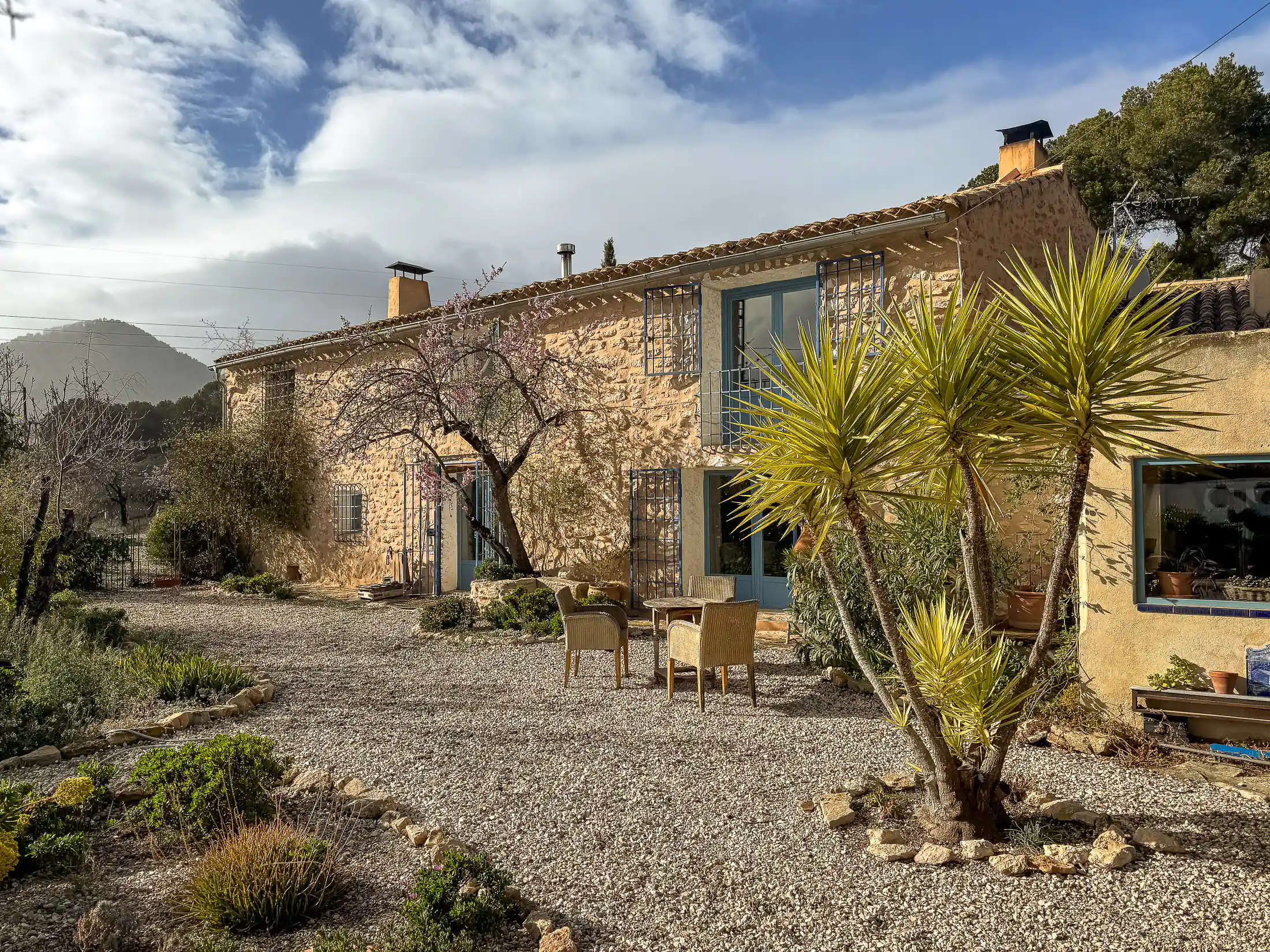

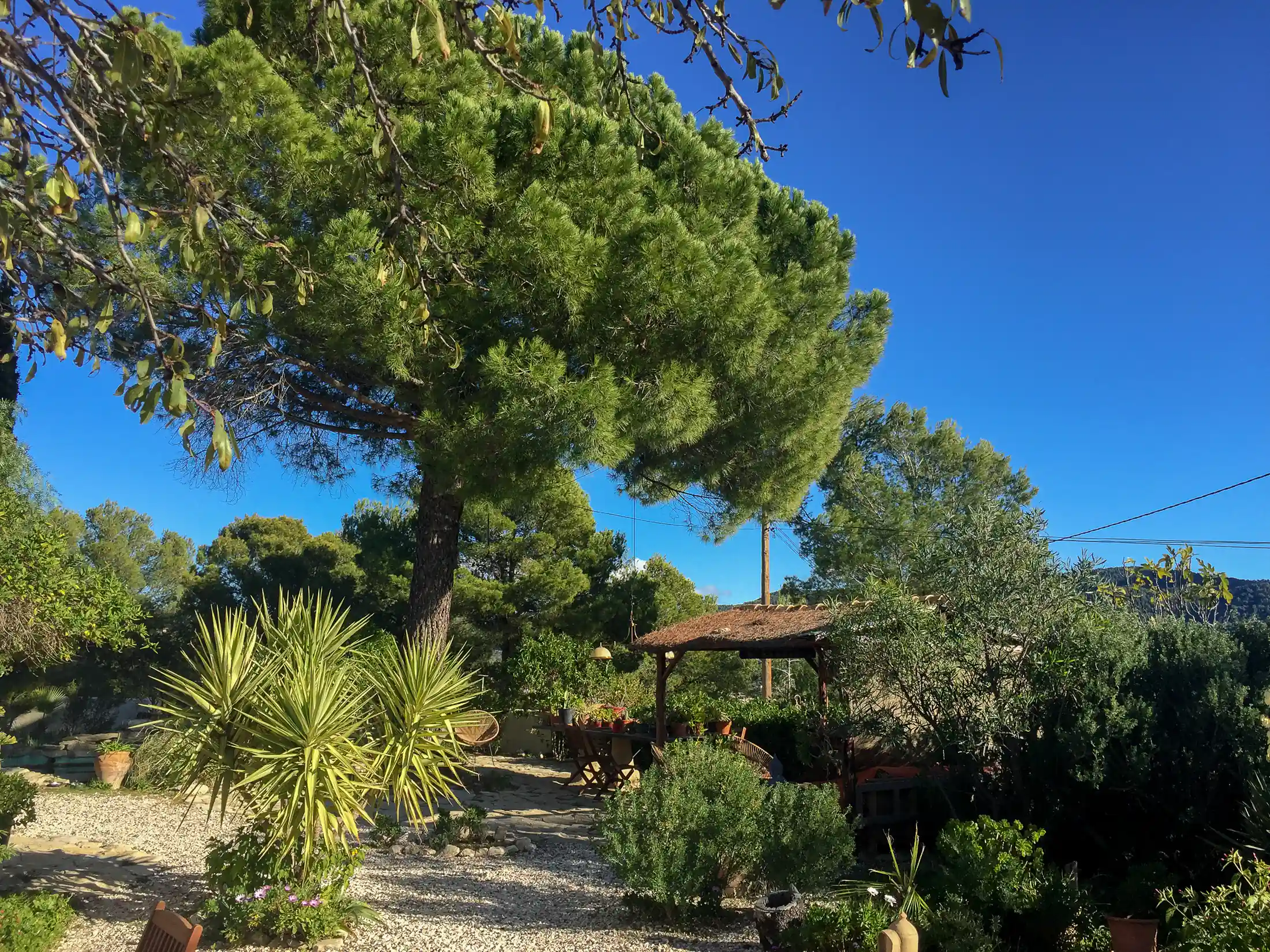
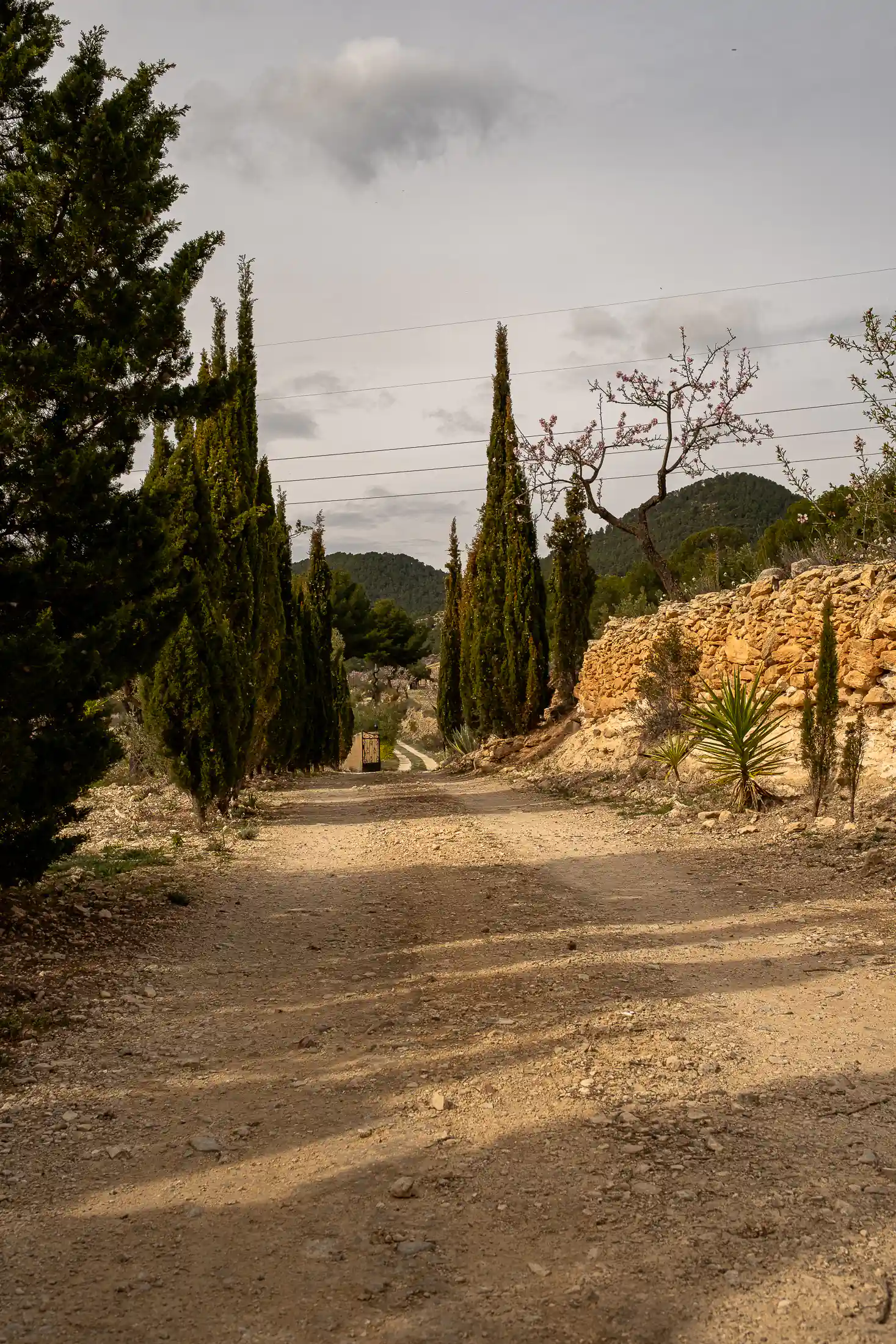




Located at nearly 800 meters above sea level in the Alicante region, the house overlooks an open landscape of terraced olive groves, almond trees, and majestic pines. Just a few kilometers from Torre de la Mançanas—a picturesque village renowned for its mild climate and preserved natural surroundings—it enjoys ideal tranquility for reflection and creation while remaining easily accessible from Alicante. Built of “Taperal,” a local stone characteristic of the region, the residence offers several outdoor spots for working, reading, or simply enjoying the calm.Its privileged location, both isolated from urban bustle and open to an exceptional panorama, makes it a refuge conducive to inspiration and relaxation.
The studio dedicated to the artist residency is set up at one end of the house, with an independent entrance, while remaining connected to the main house if needed. It includes a small bedroom with a double bed, a living area with a sofa‑bed and wood stove, as well as a kitchen and a bathroom. Two “casitas,” small metal-and-glass cubes installed in the garden, can serve as comfortable bedrooms immersed in nature or be transformed into 3 × 3 m studios, thus providing additional spaces to work or relax.
In addition to the “casitas,” which allow for working in nature while enjoying the comfort of an enclosed space, a 7 m² dojo has been built at the back of the garden. Sheltered from the elements, it offers a suitable location for outdoor artistic or physical practices in a peaceful, secluded atmosphere, while maintaining a direct connection with the natural environment.


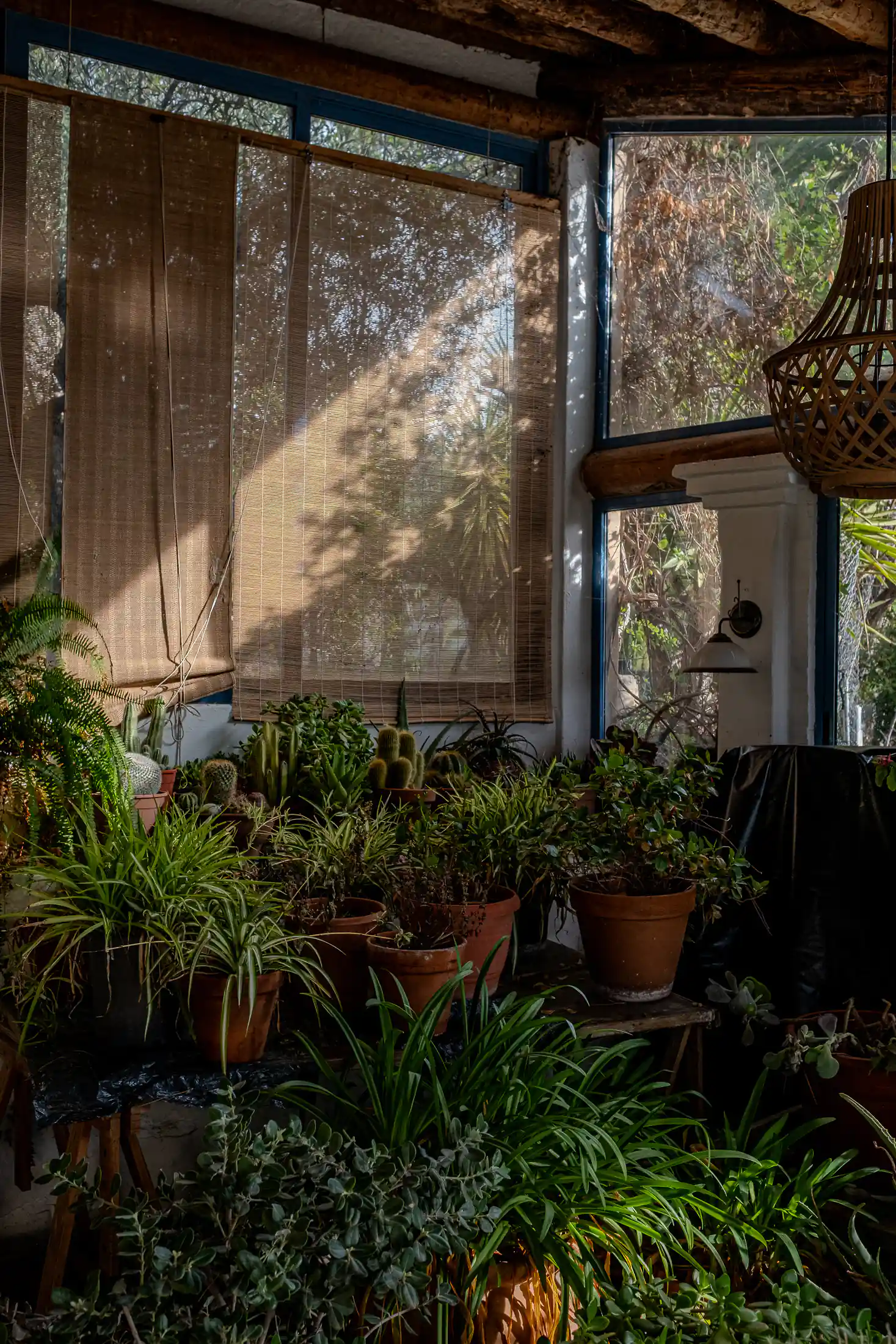
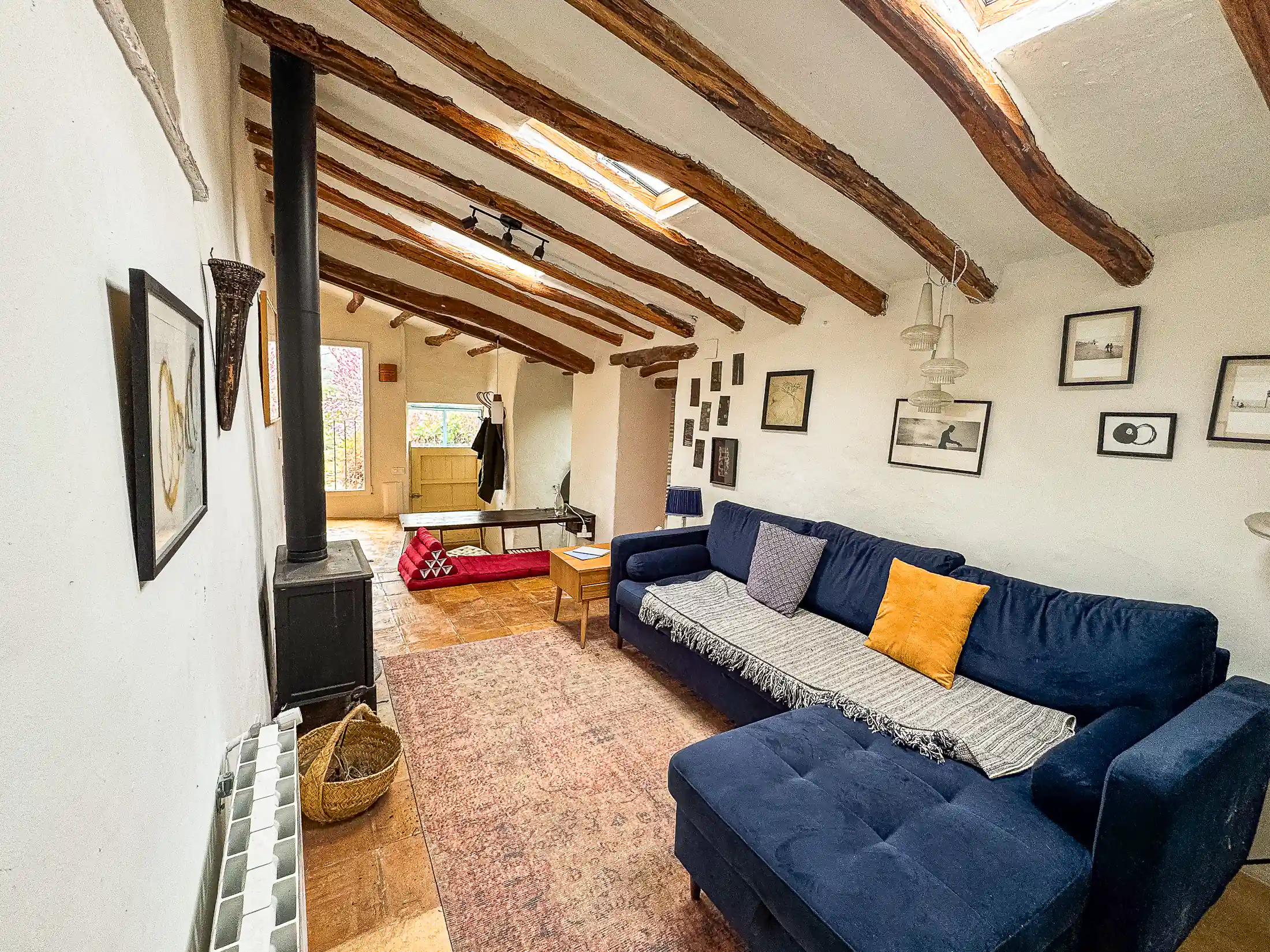

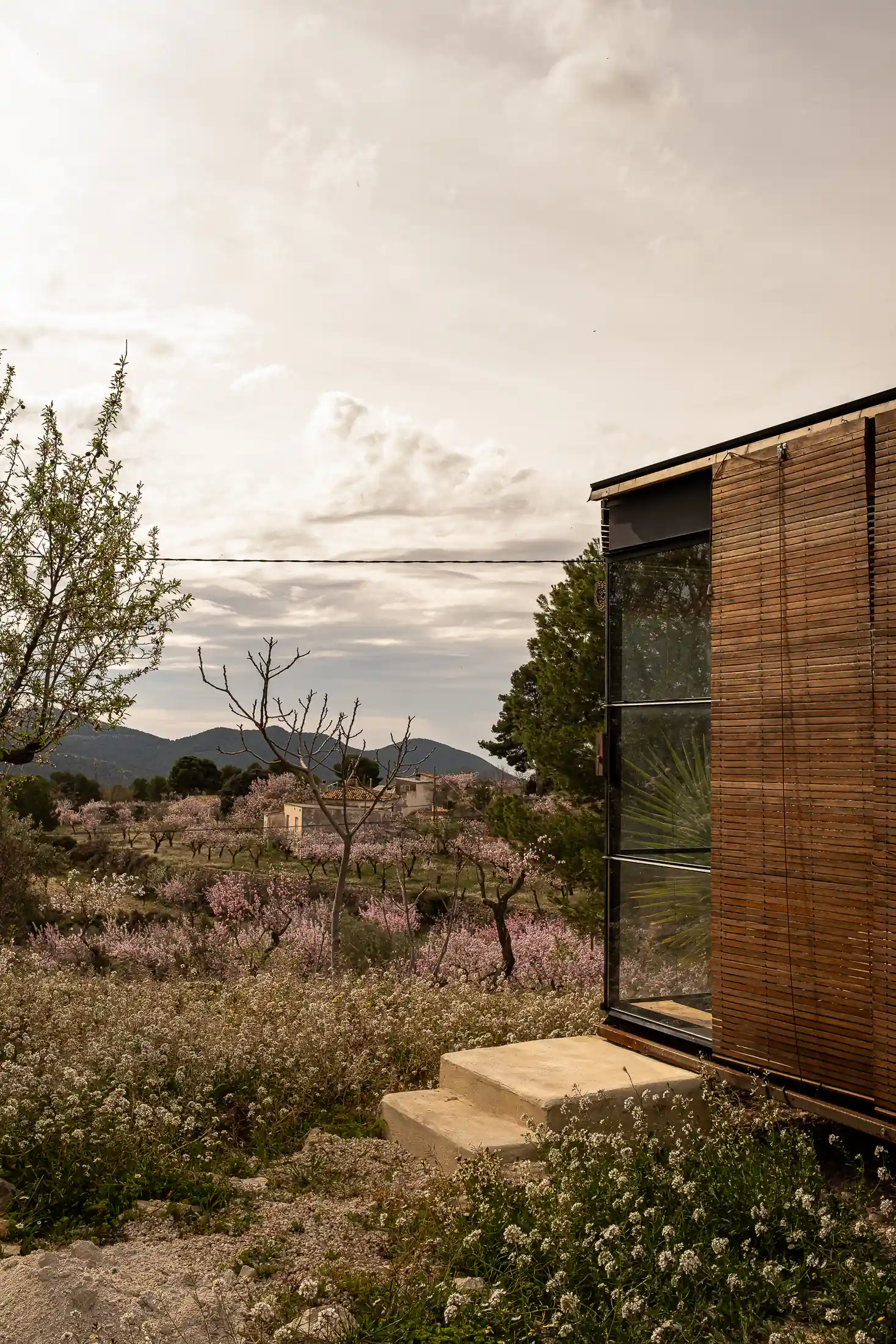

acces details
Open to all artistic disciplines, our residency welcomes you for creative projects with total freedom. However, please note that while the studio space is designed to inspire your work, it remains intimate in size. Likewise, you will not find any art supplies, heavy equipment, or machinery on site. You will therefore need to bring your own tools or devise creative solutions for any technical installations.
In line with a vision that supports and encourages artistic creation, no rent will be charged to our residents. As the heir to a house that once belonged to an artist, it embodies the spirit of sharing in the face of the economic challenges that creators face.
Nevertheless, as this is private property, a contribution of €100 per month is requested. This fee ensures the sustainability of the project and allows this unique place to continue serving as an inspiring and accessible resource for artists of today and tomorrow.
Drawing inspiration from the landscape’s transformations and climatic conditions, the residency is divided into four periods, each corresponding to a season. The panorama changes throughout the year, offering unique atmospheres conducive to creation.
The residency start dates are set on October15, January15, April15, and June1. To ensure an efficient selection process, applications must be submitted with a minimum notice of three months.
The availability of the next session is announced on this website (look a little further down).
To submit your application, please send us an email that includes a photo and a detailed presentation of your project, explaining your artistic motivations. We also invite you to attach a brief biography, your artistic CV, and a description of your artistic affinities.
This will allow us to better understand your creative universe and foster dialogue through the diversity of approaches within our residency.
MAS
DEL
TAPERAL
artists
in Residence
Photographer Patrick Charpentier explores the interwoven relationships between memory, sensorial experience, and cultural heritage. For several years, he has been developing a body of research centered on palm trees as hybrid figures—at once familiar yet deeply charged with colonial imaginaries. His project was born from an intimate memory and a musical recollection: the voice of his mother, revived by Nadir’s Romance in Bizet’s The Pearl Fishers. It questions how images, like memories, reveal themselves, shift, and fade.Equipped with a Polaroid SX-70 and black-and-white instant film, he photographs palm trees around the world. These delicate, vibrant images function as fragments of memory—immediate yet ephemeral, precise yet always fleeting. They open a dialogue between the personal and the political, probing the legacy of Orientalism and the visual narratives shaped by European colonial history.
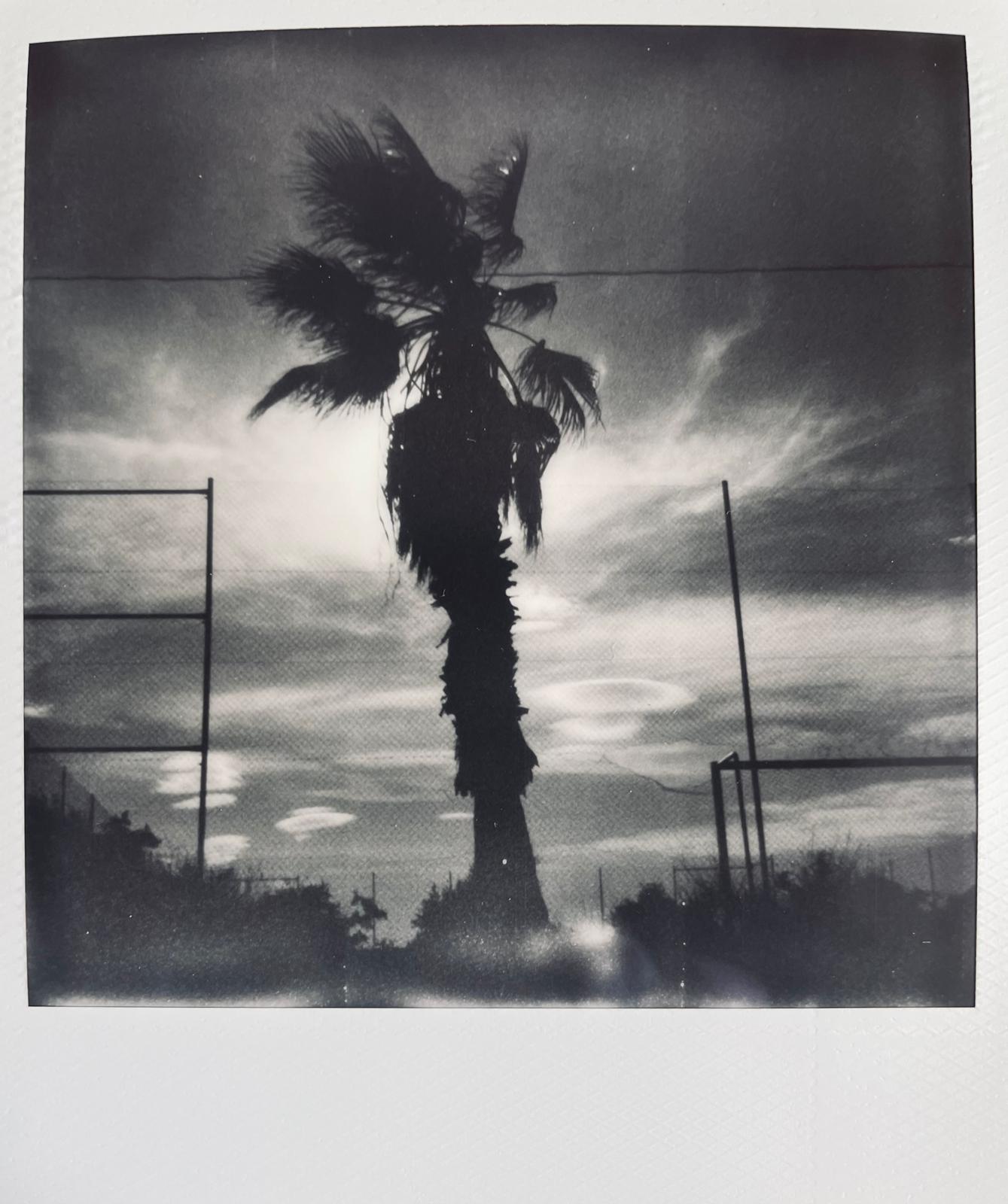
The Mas del Taperal plays a crucial role in the evolution of this project. It is within this welcoming place—favouring isolation, focus, and experimentation—that he was able to structure a work matured over several years. He will soon return for a second residency, continuing his exploration of light, space, and the interrelation between physical experience and emotion. Located near Elche—the largest palm grove in Europe—the residency offers a strong territorial anchor where landscape, walking, and daily rituals fuel a sensitive artistic practice.At the Mas del Taperal, he will pursue the creation of a corpus in which personal memory meets cultural history, and where each image interrogates our gaze—and what it reveals about ourselves.
Not everyone is fortunate enough to experience a life-altering creative journey in such a magical place. For me, that magic unfolded at Mas de Taperal in Torremanzanas, where I became the first artist-in-residence. My space—a century-old Spanish farmhouse—was warm, inviting, and bathed in natural light, the perfect haven for artistic exploration. I began by painting within the garden’s embrace, my brush guided by the colors and textures of the land. Slowly, my work expanded beyond its borders, spilling into the rolling hills and winding streets of nearby towns, each crooked alley and sunlit corner offering boundless inspiration.

At the end of a full creative day, I’d walk the familiar twenty-minute goat trail into town, gathering food for dinner while plucking rosemary, sage, and thyme growing wild along the path. The rhythm of that routine, the quiet communion with nature, became part of the art itself.Returning to the States, I felt the weight of leaving that oasis behind. The transition was difficult—until my first exhibition of the works created there reminded me just how extraordinary the experience had been. At first, I hesitated to share it, guarding the memory like a rare treasure. But in time, I found myself shouting to anyone who would listen about the dream that had come true.
I Believe I Still Hear
About the residency Le Mas de Taperal in Torremanzanas, Spain
A turnkey creative refuge that supports the development of artistic workBy offering me the time and isolation I needed, the residency allowed me to better structure this project, which had been in gestation for several years. Thanks to an individual living and working space, as well as flexibility in duration, the residency provides an environment conducive to long-form creation and intimacy—standing in contrast to the demands for productivity and optimization that too often hinder artistic work.Rooted in a daily rhythm of long outdoor walks and excursions throughout the region, my research process benefited from a sensory experience centered on questions of light and space. The quietness of the surroundings and the beauty of the landscapes undoubtedly contributed to a deeper understanding of this work, in which physical and emotional interrelation plays a major role.

About the research
A photographic project about an orientalist opera, palm trees, and memory
Today I am leaving for the residency in Torremanzanas, located near Elche, home to the largest palm grove in Europe.For a month, I will be photographing palm trees, as I have been doing for several years in different parts of the world, using a Polaroid SX-70 and black-and-white instant film.This project was born from a memory—a memory of voices, music, presence.My mother loved listening to opera arias on the radio. I remember her turning up the volume whenever she recognized a familiar tune. Her eyes would shine, and she would sing along, awkwardly.One day, I heard Nadir’s Romance from The Pearl Fishers by Georges Bizet again. That aria resurrected something deeply buried within me: my mother’s voice. A voice long gone, forgotten, returning through the music.“I believe I still hear, hidden beneath the palm trees, her tender and resonant voice,” sings Nadir, in this waking dream where past and present merge.Since that day, I have been photographing palm trees—those exotic silhouettes turned familiar, those silent witnesses populating the Western colonial imagination. At first, I didn’t know why. I simply had to. This attention to palm trees, which became an obsession, was perhaps only a confirmation bias: they had always been there, but now I saw them. As one sees someone again in a reflection.These photographs are made exclusively with instant Polaroids, whose very nature evokes memory: immediate yet ephemeral, often imprecise, sensitive to time. The Polaroid, with its trembling contrasts and soft edges, behaves like a mental image.It freezes a moment while suggesting its imminent disappearance. Like memories, it reveals itself slowly, letting shapes emerge that were there but not yet seen.Each image becomes a fragment of memory—personal, but also collective.But this project extends beyond the intimate. It also questions what The Pearl Fishers represents: a key work of 19th-century musical orientalism. A French opera set in Ceylon (Sri Lanka), imagined through the exoticizing lens of colonial Europe. As is often the case in orientalist works, the “Orient” serves merely as an aesthetic pretext, a projection screen for Western fantasies.As Edward W. Said reminds us in Orientalism (1978), “Orientalism was more than an auxiliary of colonialism; it was its alibi, a mode of domination through discourse, through the performative power of representation.” Said shows how orientalism, by linking knowledge and power, helped justify European colonial expansion—by creating an imaginary Orient that naturalized domination.Even today, this opera is still performed regularly, often without questioning the gaze it casts on the “other.” But what does it mean to look at such representations in a post-colonial world? What does it mean to listen to, applaud, exhibit, or transmit these works today?From a sociological perspective, this project also draws on the analyses of Pierre Bourdieu, who wrote in Distinction (1979):“The museum matters to those who go to it insofar as it allows them to distinguish themselves from those who do not go.”Opera, like contemporary art, participates in this logic of distinction and cultural legitimation.And as Antonio Gramsci, quoted by Bourdieu, put it:“The worker tends to carry into all areas his dispositions as an executor.” This internalized symbolic domination creates a silent form of recognition of norms imposed by dominant classes.These photographs, in their fragile immediacy, are both sensitive and political objects.They tell the story of a voice rediscovered beneath the palm trees.
They interrogate a gaze, a legacy, an aesthetic of power.
They ask the question: What do we see when we look at the Orient?
And what does that gaze say about ourselves?
We spent ten days on a writing residency (working on screenplays) at Mas de Taperal. The house is magnificent, and the studio for residents offers both privacy and autonomy, making it all the more enjoyable to gather in the evening under the large tree on the terrace for a delicious meal filled with laughter and wonderful conversations with Isabelle (and other residents).Our writing sessions in the dojo—crossed by a gentle breeze that allows you to enjoy the outdoors and the view over the hills, beneath the olive and almond trees, without suffering from the heat—were interspersed with swims always supervised by Yago, the adorable four-legged lifeguard.The village is very close (a 12-minute walk), with shops, small cafés, and a Sunday market. On Friday evenings, there is a brass band rehearsal at the casa cultural; if you’re musicians, you might even join in…Mas de Taperal is an ideal place to set your thoughts down and work far from the everyday life of Brussels.

MAS
DEL
TAPERAL
contact
Questions? Would you like to apply? Or something else?
write to us

